
‘Cities under the sea’
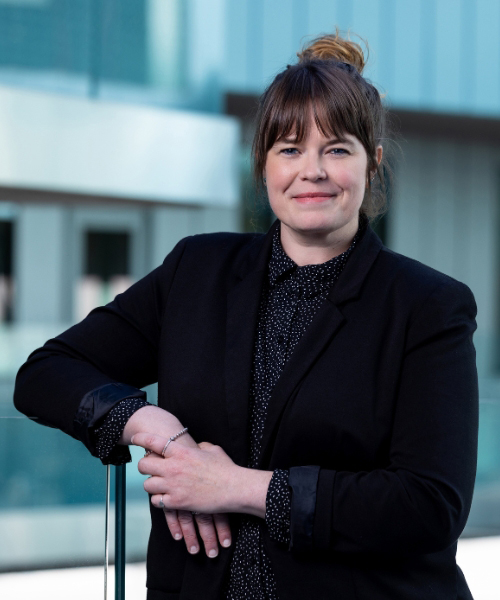
Her first foray into scuba diving took her to the depths of the Mediterranean Sea.
“I loved being underwater and seeing marine life in action,” Roger said. “For me, it felt full of discoveries, adventures and treasures.”
Now an assistant professor and a senior global futures scientist at Arizona State University, Roger has devoted her career to the ocean invertebrates that populate coral reefs.
Roger takes an outside-the-box approach to ocean conservation and has partnered with nanotechnologists to protect and restore the thousands of coral species that make up the world’s remaining reefs.
“At ASU, we are oriented toward making the world better for future generations,” Roger said. “We are all about innovation and bringing multidisciplinary teams together.”
Ninety percent of the world’s coral reefs could be decimated by 2050 due to climate change, overfishing and coral disease outbreaks, Roger said, and saving these reefs is a daunting challenge because researchers lack foundational knowledge.
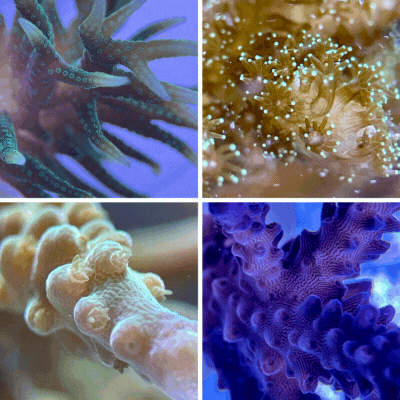
Exploring uncharted waters
Corals are invertebrate animals that build complex underwater colonies. They contain specialized cells that harbor algae, forming a mutually beneficial endosymbiotic partnership. Corals and their jellyfish cousins top the list as some of Earth’s most ancient animals. However, coral research has long taken a back seat to other topics, according to Roger.
“The questions we've answered in mammalian systems need to be examined in corals, and the need is urgent,” she said.
She likened these reefs to “cities under the sea,” in which corals are the engineers that provide the structures supporting other living things. Coral reefs are home to thousands of species including fish, crabs, lobsters, clams and more, which feed an estimated 850 million people annually.As in the legend of the lost city of Atlantis, most people overlook coral reefs because they don’t occupy everyone’s backyard, Roger said.
However, coral reefs contain potent chemicals, which medical professionals now use as treatments for cardiovascular diseases and cancers. In fact, the majority of all new cancer drug research focuses on examining marine organisms, many of which live on coral reefs.
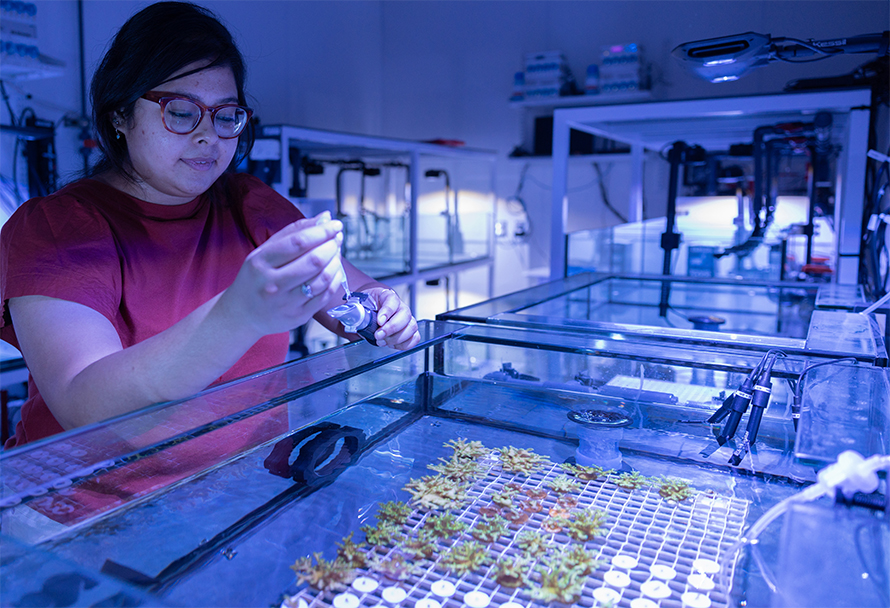
In a lab, coral cells can be difficult to grow and require specialized equipment to maintain, Roger said. At ASU, she cultivates dozens of shallow-dwelling corals and related invertebrate species, such as sea anemones and jellyfish. These creatures grow under blue light in the lab, which mimics their natural light source in the ocean. As the depth of the ocean increases, colors such as reds and oranges are filtered out, and blue light remains.
Despite advances in molecular biology and genomic sequencing, most coral research has been limited to multicellular coral colonies or heterogeneous cell mixtures, Roger said, because isolating uniform cell cultures is challenging.
Recently, scientists identified the cell types that make up coral. In addition, researchers have adapted CRISPR/Cas9 technology to alter the genes in coral — almost two decades after scientists used a similar technique to create the first knockout mouse.
Much about basic coral biology still eludes researchers.
Nikki Traylor–Knowles, an associate professor in marine biology and ecology at Miami University, studies the coral immune system. She said she struggles to strike a balance between basic and translational coral research.“We're often operating under an ‘emergency scenario,’ which makes it really hard to get answers,” Traylor–Knowles said. “There’s a constant feeling of playing catch up on a shoestring budget to save this really important ecosystem that we’ve just started to understand.”

Stressed out
Corals comprise over 40 cell types and partner with algae, which give reefs their dazzling colors. In return for a protected home, algae provide their coral hosts with essential nutrients.
Thermal stress, irradiation, disease, ocean acidification as well as deoxygenation and other factors cause coral bleaching, which threatens coral survival and their endosymbiosis with algae. Bleaching triggers symbiosis breakdown and transforms corals into lifeless skeletons. Researchers have not completely ironed out the mechanisms behind coral bleaching, but most agree that free radicals play a major role.
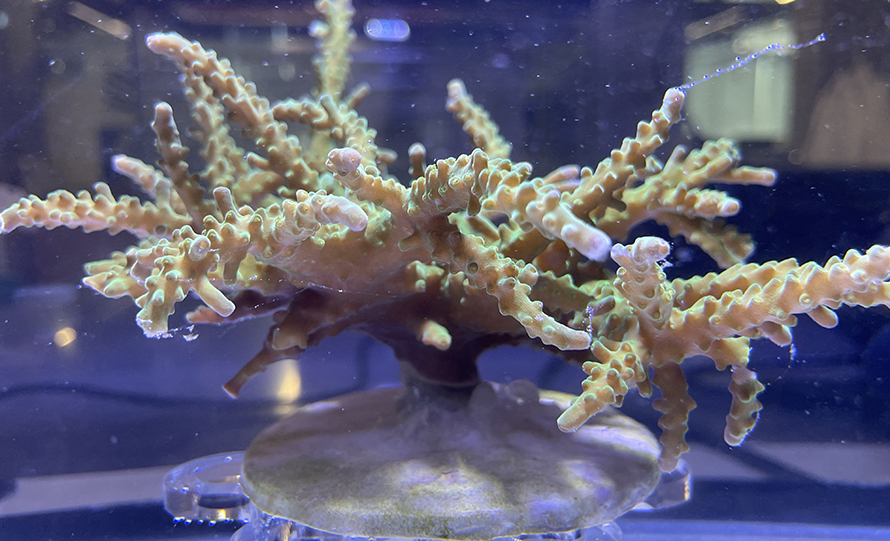
“When corals get stressed, like us, they release a burst of reactive oxygen species and go into oxidative stress,” Roger said.
During stressful periods, nutrient transfer from algae to coral host breaks down, and the coral may starve without other nutrients from the ocean. In the algae, thermal stress disrupts photosynthesis and mitochondrial electron flow. This leads to toxin buildup, coral immune responses and cell membrane breakdown.
However, Traylor–Knowles said, it is difficult to know if a coral is stressed before it is too late.
“We often don't know if a coral is sick until it's bleached or basically sloughing off its tissue, which means it's dead.”
Traylor–Knowles’ lab develops tests to probe coral health so researchers can intervene and treat corals before bleaching.
“Corals are so fragile,” Saborni Chowdhury, a graduate student in the Roger lab, said. “A slight change in pH or salinity can kill or affect their metabolism.… But they are so valuable. A lot of their basic biology has been understudied because the focus has been on ecology.”
Nifty nanotech to the rescue
During her postdoc, Roger worked with Nastassja Lewinski, an associate professor of chemical and life science engineering at Virginia Commonwealth University. Their goal: use advances in nanotechnology to combat coral bleaching.
Nanotechnology is the understanding and control of matter at dimensions between approximately one and 100 nanometers and has been used in medicine for more than a decade, despite public skepticism. Examples include everything from drug delivery systems such as lipid nanoparticles to mineral-based sunscreens.
“The public is very scared of ‘nano’ things,” Roger said. “But we need society to understand the science behind nanotechnology, and we are being very careful not to do any harm.”
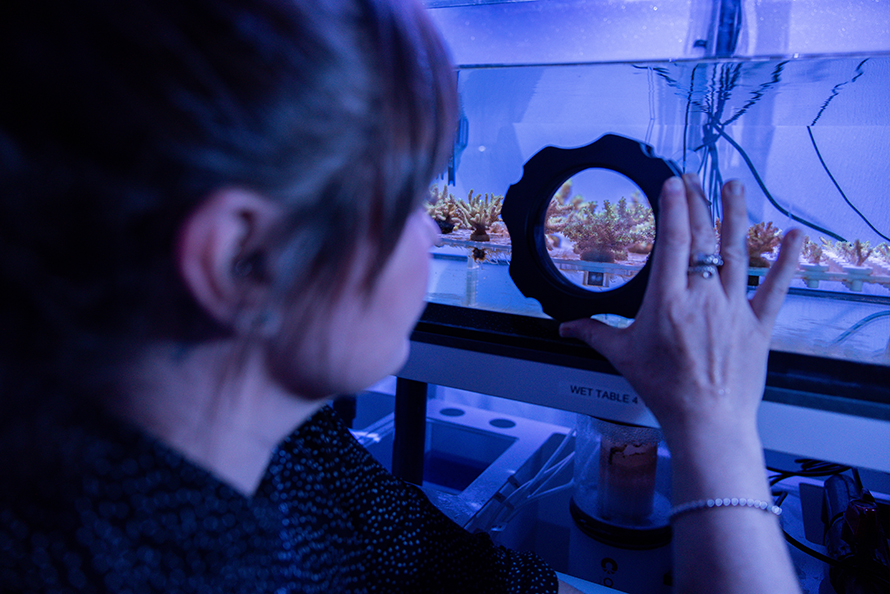
Roger and Lewinski used the antioxidant properties of nanoceria, or cerium dioxide nanoparticles, to eliminate toxins from stressed corals. Lewinski compared nanoceria’s activity to that of the enzyme superoxide dismutase.
Unlike other metal oxides, nanoceria can exist in two different electron states depending on their environment. This means they can act as a free radical scavenger at a physiological pH and a reactive oxygen species generator in an acidic environment, such as inside a cancer cell or bacteria.
Since bleaching begins with the algae symbiont, Roger and Lewinski focused their study on a free-living algae, Breviolum minutum. They hypothesized that polyacrylic acid-coated nanoceria could reduce reactive oxygen and reactive nitrogen species in B. minutum under high temperatures.
In the lab, the team exposed the algae to two temperatures: 27 °C, a normal tropical water temperature, and 34 °C. After nanoceria treatment, they saw a fivefold decrease in intracellular reactive oxygen levels in B. minutum under hotter temperatures. Nitric oxide also diminished by 17%. These changes occurred after a one-hour treatment, and nanoceria did not hamper algae survival or growth.
“I don't see this as a ‘miracle solution,’” Roger said. “I see this as a short-term treatment to help corals until humanity acts.”
Roger and Lewinski will continue testing coral nanoparticle delivery methods. Lewinski said they may take inspiration from drug delivery methods such as microneedles, patches and hydrogels.
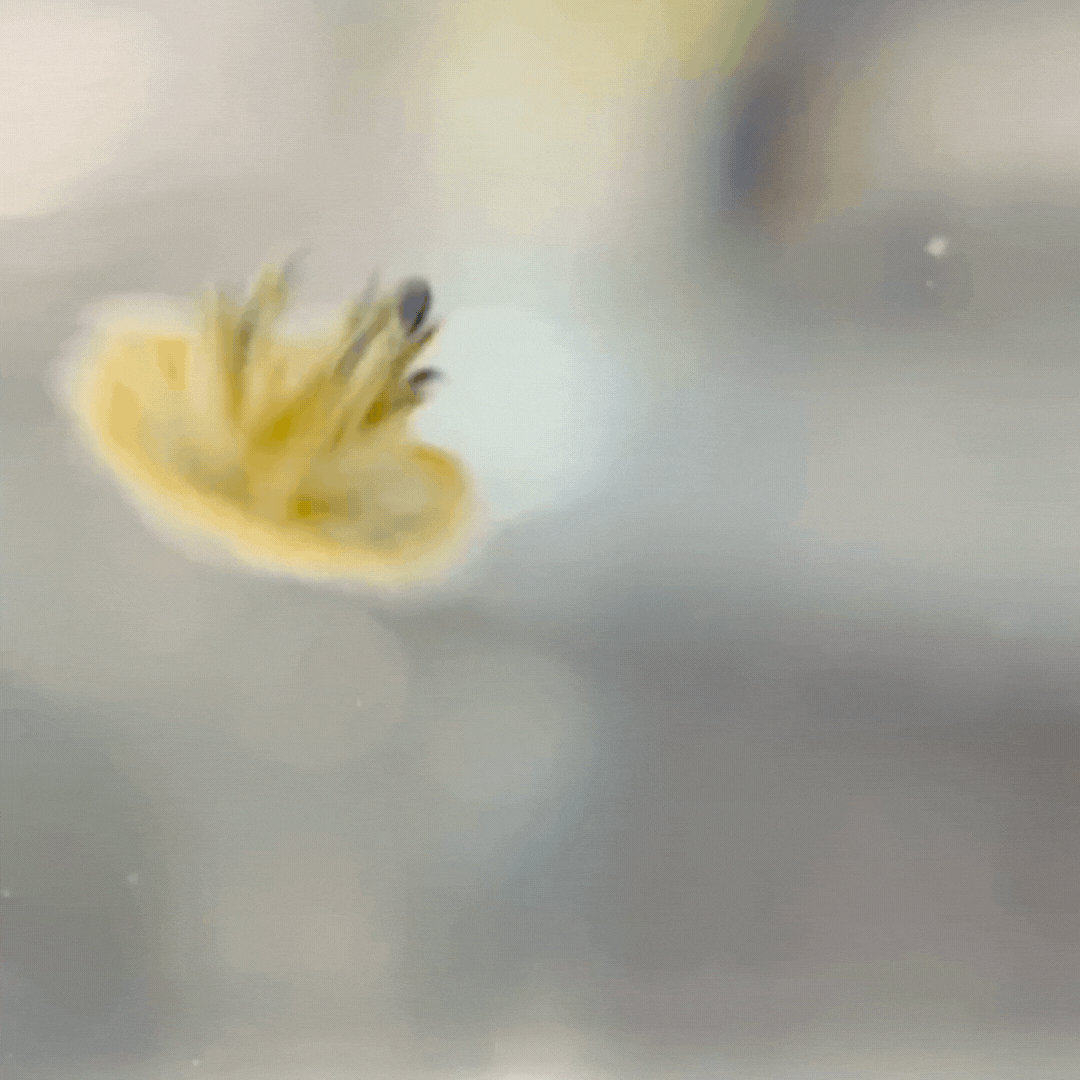
“My postdoctoral work was my first foot into the door of nanotechnology,” Roger said. “It really opened up doors to a lot of other opportunities and ideas.… These techniques are quite advanced in plants and humans; it’s not a big leap to develop them for corals. We just have to find the right targets.”
In her lab, Roger said she will investigate how to improve coral model systems and mitigate bleaching using nanotechnology. Chowdhury is using her skills in molecular biology and proteomics to study heat shock proteins in corals and other invertebrates, such as jellyfish and sea anemones.
“Some marine organisms have a higher bleaching tolerance than others,” Chowdhury said. “We want to understand the proteins and the underlying biochemical pathways that lead to bleaching tolerance in coral cousins like jellyfish and giant clams. Then, we could extract those special biomolecules, package them and deliver them to corals to give them a better chance of survival.”
Heritage beneath the waves
More than 800 million people depend on coral reefs for food, coastal protection and tourism, especially in the Caribbean and south Asia, according to a study in the journal PLOS ONE.
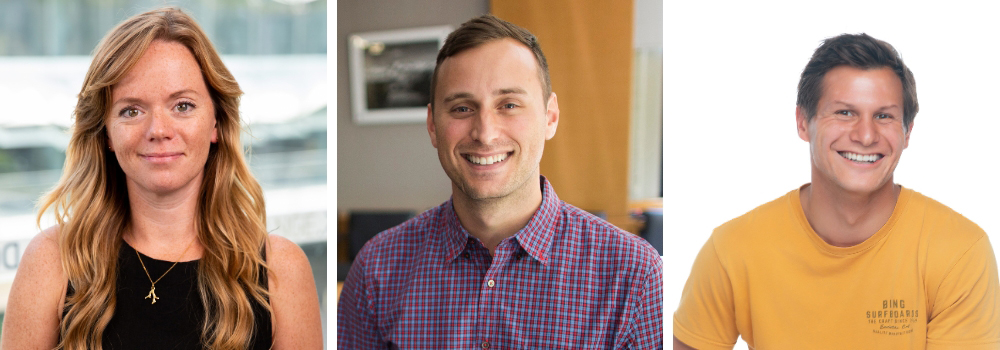
Jennifer Matthews, a research fellow at the University of Technology Sydney, fell in love with corals during a vacation in Thailand.
“I went on holiday to learn how to (scuba) dive,” Matthews said. “I went underwater, and I saw corals for the first time. They were these neon yellows, pinks and bright blues. They were so beautiful.”
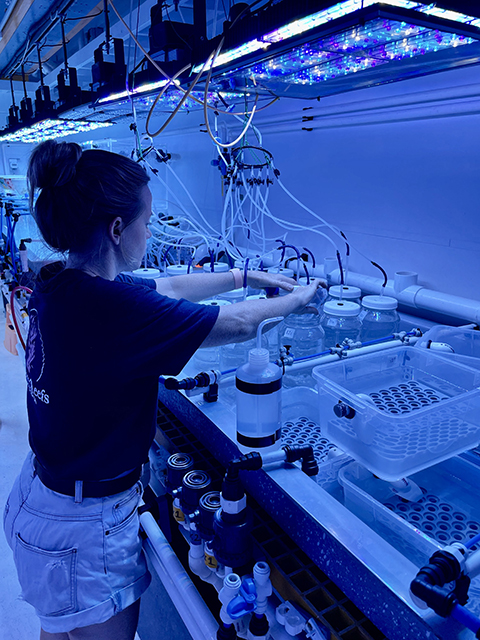
Matthews later learned that she had seen a coral bleaching event. During bleaching, most corals turn white; but some can turn neon colors, creating a makeshift sunscreen, to shield themselves from excessive light exposure without their algal symbiont.
“I thought, ‘If something could look that beautiful when it's that stressed, imagine what it could look like when it's happy,’” Matthews said.
Matthews now lives just around the corner from the world’s largest tropical reef. Her team collaborates with local communities to mitigate pollution and reef damage by providing corals with nutrient supplements.
“The Great Barrier Reef has immense ecological, economic and iconic value for Australia,” Matthews said. “All Australians feel a connection to the reef because it is just part of who we are.”
The need is now
“So many American still don’t believe in climate change,” Roger said. “But climate change is the entire basis of my research, and it’s all our fault.”
Despite regulations designed to curb emissions, humans continue to harm the oceans and their inhabitants, sometimes unknowingly, Roger said. Most people think corals live in shallow, warm waters, but more than half of all coral species occupy dark and cold waters.
In January, Norway was the first to approve seabed mining, despite scientists’ warnings. Deep-sea mining removes mineral deposits from the ocean floor and releases toxins that can kill corals and other species.
“It’s high time we realize that we need to save and protect corals from further damage,” Chowdhury said. “If their equilibrium is disrupted, humans will have to pay for the consequences.”
While working in Madagascar, one of the world’s poorest nations, for over 25 years, Christopher Golden, an associate professor of nutrition and planetary health at Harvard University and Oceana science advisor, saw firsthand the effects of climate change in the oceans.“We are seeing the confluence of sea temperature rise, ocean acidification, pollution and over exploitation of fisheries,” Golden said. “Because of this, we worry a lot about food security.”
Most costal Malagasy people depend on the oceans for survival. However, due to the climate change-induced changes in the reefs, they can no longer sustainably feed themselves, Golden said.
“About 85% of the Madagascar population live in rural and remote areas,” Golden said. “A very large proportion of the population is severely poor; nearly half of the population are chronically malnourished. So, we are facing urgent lifestyle issues that really need to be dealt with now.”
Golden and his team are constructing artificial reefs using limestone to create a new home for corals, algae and fish that have been displaced by reef destruction.
The team installed autonomous reef monitoring structures, or ARMS, in Madagascar near a healthy reef system. These cube-like structures consist of a stack of 10 rigid vinyl sheets.
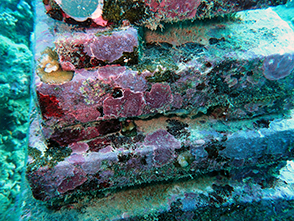
Reef native species accumulate on the ARMS so researchers can take the pulse of the area. They can then collect the tiny organisms and transplant them onto artificial reefs, Golden said.
“Through this process, which obviously takes a long time, we can try to reshape ecological dynamics to rehabilitate what was once a healthy coral reef ecosystem,” he said. “(In Madagascar), we're trying to build what will ultimately be the world's largest artificial coral reef to see if we can rehabilitate fisheries as well as increase access to seafood.”
Scientists, including Roger and Matthews, agree that coral reefs require human intervention to protect them against impending damages.
“I think the main thing to recognize is that there's never a perfect solution,” Lewinski said. “There are always going to be trade-offs. I can always say we need more research, but what's very apparent with the coral reef decline is that there may be a crucial window of opportunity for us to act.”
‘Coral baby food’
When corals reproduce, they release millions of gametes into the ocean creating a colorful underwater blizzard. However, only 1% of these gametes survive, Matthews said.
“That’s a critical bottleneck to restoring reefs because it's limiting genetic diversity and the potential to produce corals that might be better adapted to the changing environment,” Matthews said. “If we could improve the survival of corals in their most vulnerable life stages, then we could potentially have a much greater pool, not just to rebuild coral reefs, but also to help restore their ecological functions and maintain them as the climates change.”
To harness this source of genetic diversity, Matthews created what she calls “coral baby food,” lipid-loaded lipid nanoparticles that promote coral larvae survival.
When the researchers exposed lab-grown coral larvae in elevated culture temperatures to the lipid nanoparticles, they boosted larvae survival from 1% to almost 50%.
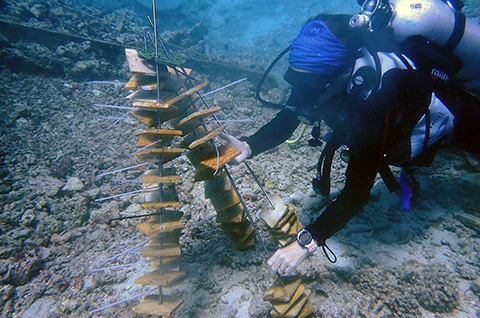
Matthews is now planning to take her “well-fed corals” to the Great Barrier Reef.
The team collected coral larvae during a mass spawning event and took them back to the lab to be reared and fed. After they mature, the researchers will release the young corals back onto the Great Barrier Reef where they were collected. Matthews said she hopes these efforts will drive the restoration and rehabilitation of native coral populations in Australia.
“Some of this research might sound a little out there,” Matthews said. “But we need to start thinking outside of the box; we need to start taking on what may seem like ‘risky’ experiments like lipid nanoparticle feeding to buy time until we can get our act together on climate change. It can sound perhaps a little daunting that we're going to more extreme measures on reefs, but (the corals) require it.”
Matthews plans to collaborate with Roger to adapt her coral baby food for adults to feed them without disturbing the local environment.
“We definitely appreciate that our work sounds like we're pumping the ocean full of chemicals,” Matthews said. “But that’s not what we're doing. Our work is very targeted.
Reef rehab
Corals structurally adapted over millions of years to use sunlight efficiently, according to Daniel Wangpraseurt, a principal investigator of coral reef ecophysiology and engineering at the University of California, San Diego. He studies coral structures at the nano and micrometer scale to replicate them in the lab using 3D bioprinting. This tissue engineering technique harnesses the workflow of 3D printing using bioinks infused with living algae.
“We are creating a 3D cell culture environment that mimics the chemical and physical environment of how these cells grow in nature,” Wangpraseurt said.
Roger teamed up with Wangpraseurt to bolster the coral model systems in her lab.
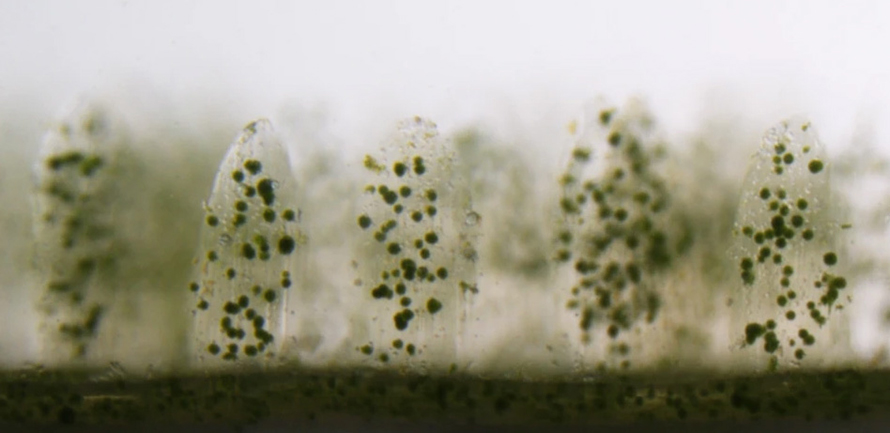
“We hope that some of these advances in bioprinting and nanomaterials research are able to shed completely new light on fundamental processes in corals,” Wangpraseurt said. “Hopefully, this will help to facilitate the development of new technologies that can reduce and manage coral bleaching.”
Using a multimillion-dollar award from the U.S. Department of Defense’s Defense Advanced Research Projects Agency, Wangpraseurt and his team plan to build an artificial reef off the coast of Hawaii. They are constructing biomaterials, such as hydrogels, designed to enhance coral recruitment and attachment.
“Our team will develop new biomaterials that will kick-start the living reef by applying state-of-the-art medical tissue engineering approaches," Wangpraseurt said in a press release.
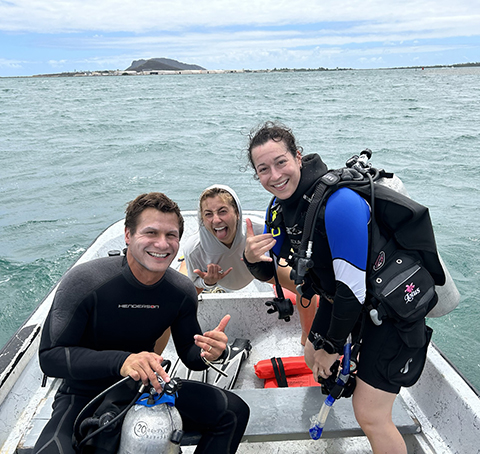
Lewinski’s lab examines another aspect of corals that could be used for restoration: coral wound healing. Migrofragmentation, the method by which scientists break a coral colony into smaller pieces, is the gold standard for propagating coral colonies to plant back into the ocean. According to Lewinski, microfragmentation speeds up the tissue growth process and promotes rapid regeneration.
Which method of reef restoration and regeneration will ultimately be the most successful? Scientists don’t have the answer, but Golden said working on multiple approaches simultaneously could be the key.
“If there was a straightforward answer to climate change, it would already be fixed,” Golden said. “We need to work with local populations on bettering their lifestyle and introducing conservation efforts so that we can create a happy future for all.”
Ocean ecosystems are changing inevitably, Roger said, and mitigating these changes requires help from everyone. Without societal change, the coral reefs she marveled at in Cousteau’s documentaries as a child will cease to exist.
“I want future generations to experience marine life the way I have,” Roger said. “For this, we need to live in a more conscious way. Let's be more connected to the natural environment through education and lifestyle for a healthier planet.”
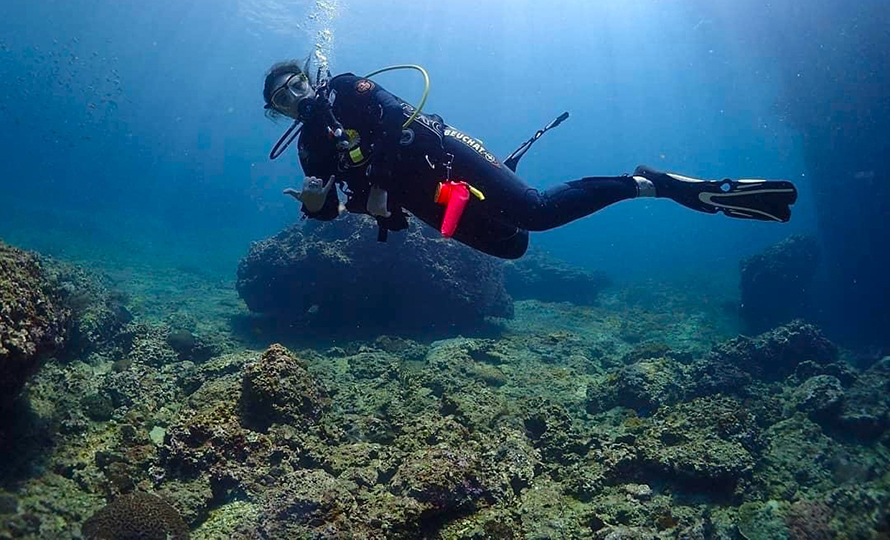
Enjoy reading ASBMB Today?
Become a member to receive the print edition four times a year and the digital edition monthly.
Learn moreGet the latest from ASBMB Today
Enter your email address, and we’ll send you a weekly email with recent articles, interviews and more.
Latest in Science
Science highlights or most popular articles

Targeting Toxoplasma parasites and their protein accomplices
Researchers identify that a Toxoplasma gondii enzyme drives parasite's survival. Read more about this recent study from the Journal of Lipid Research.

Scavenger protein receptor aids the transport of lipoproteins
Scientists elucidated how two major splice variants of scavenger receptors affect cellular localization in endothelial cells. Read more about this recent study from the Journal of Lipid Research.

Fat cells are a culprit in osteoporosis
Scientists reveal that lipid transfer from bone marrow adipocytes to osteoblasts impairs bone formation by downregulating osteogenic proteins and inducing ferroptosis. Read more about this recent study from the Journal of Lipid Research.

Unraveling oncogenesis: What makes cancer tick?
Learn about the ASBMB 2025 symposium on oncogenic hubs: chromatin regulatory and transcriptional complexes in cancer.

Exploring lipid metabolism: A journey through time and innovation
Recent lipid metabolism research has unveiled critical insights into lipid–protein interactions, offering potential therapeutic targets for metabolic and neurodegenerative diseases. Check out the latest in lipid science at the ASBMB annual meeting.

Melissa Moore to speak at ASBMB 2025
Richard Silverman and Melissa Moore are the featured speakers at the ASBMB annual meeting to be held April 12-15 in Chicago.

